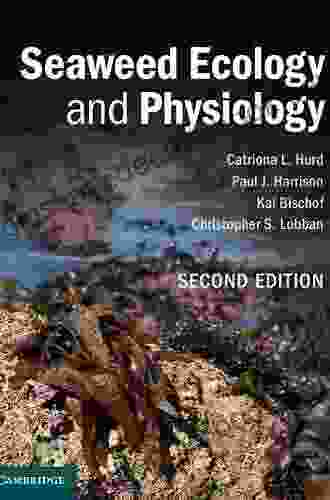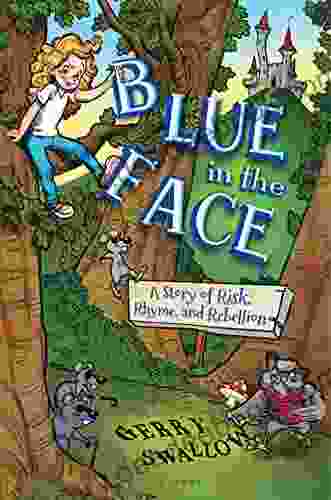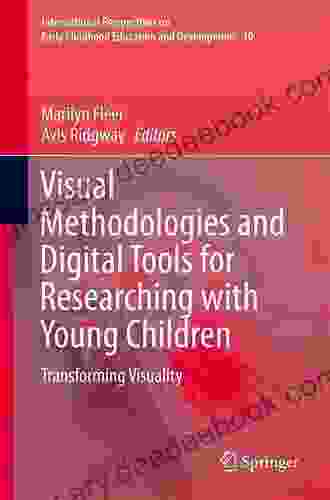Seaweed Ecology and Physiology: An Overview

4.8 out of 5
| Language | : | English |
| File size | : | 25511 KB |
| Text-to-Speech | : | Enabled |
| Screen Reader | : | Supported |
| Enhanced typesetting | : | Enabled |
| Print length | : | 565 pages |
Seaweeds are a diverse group of marine algae that play a vital role in coastal ecosystems. They provide food and shelter for a variety of marine organisms, and they also help to filter the water and remove pollutants. In addition, seaweeds are a source of food, fertilizer, and other products for humans.
Seaweeds can be found in a variety of habitats, from the intertidal zone to the deep sea. They can attach to rocks, shells, or other hard surfaces, or they can float freely in the water column. Seaweeds come in a variety of shapes and sizes, and they can range in color from green to brown to red.
The growth and reproduction of seaweeds is influenced by a variety of factors, including light, nutrients, and temperature. Seaweeds typically grow best in areas with plenty of sunlight and nutrients. They can reproduce both sexually and asexually. Sexual reproduction involves the production of gametes, which fuse to form a zygote that develops into a new seaweed. Asexual reproduction involves the production of spores, which can develop into new seaweeds without the need for fertilization.
Seaweeds acquire nutrients from the water column through their leaves and stems. They can also absorb nutrients from the sediment. Seaweeds play an important role in the cycling of nutrients in coastal ecosystems. They take up nutrients from the water column and release them into the sediment, where they can be used by other organisms.
Seaweeds interact with a variety of other organisms in coastal ecosystems. They provide food and shelter for a variety of marine animals, including fish, invertebrates, and sea turtles. Seaweeds also compete with other algae and plants for space and resources. In some cases, seaweeds can form symbiotic relationships with other organisms, such as bacteria and fungi.
Seaweed ecology and physiology is a complex and fascinating field of study. Seaweeds are important members of coastal ecosystems, and they play a vital role in the cycling of nutrients and the provision of food and shelter for other organisms. Understanding seaweed ecology and physiology is essential for managing coastal ecosystems and conserving marine biodiversity.
Seaweeds are a diverse and important group of marine algae that play a vital role in coastal ecosystems. They provide food and shelter for a variety of marine organisms, and they also help to filter the water and remove pollutants. In addition, seaweeds are a source of food, fertilizer, and other products for humans. Understanding seaweed ecology and physiology is essential for managing coastal ecosystems and conserving marine biodiversity.
4.8 out of 5
| Language | : | English |
| File size | : | 25511 KB |
| Text-to-Speech | : | Enabled |
| Screen Reader | : | Supported |
| Enhanced typesetting | : | Enabled |
| Print length | : | 565 pages |
Do you want to contribute by writing guest posts on this blog?
Please contact us and send us a resume of previous articles that you have written.
 Book
Book Novel
Novel Page
Page Chapter
Chapter Story
Story Reader
Reader Library
Library Paperback
Paperback E-book
E-book Newspaper
Newspaper Paragraph
Paragraph Sentence
Sentence Bookmark
Bookmark Shelf
Shelf Glossary
Glossary Foreword
Foreword Synopsis
Synopsis Footnote
Footnote Codex
Codex Tome
Tome Classics
Classics Narrative
Narrative Biography
Biography Reference
Reference Encyclopedia
Encyclopedia Resolution
Resolution Librarian
Librarian Catalog
Catalog Borrowing
Borrowing Archives
Archives Periodicals
Periodicals Research
Research Academic
Academic Journals
Journals Reading Room
Reading Room Special Collections
Special Collections Study Group
Study Group Thesis
Thesis Awards
Awards Reading List
Reading List T R Pearson
T R Pearson Zach Zimmerman
Zach Zimmerman Thomas S Hischak
Thomas S Hischak Grant Lord
Grant Lord Martin Kornberger
Martin Kornberger Riley Ohler
Riley Ohler Mike Mcleod
Mike Mcleod Donna A Lopiano
Donna A Lopiano Suzanne S Frucht
Suzanne S Frucht Marcos Pizarro
Marcos Pizarro Marc Rollins Mckie
Marc Rollins Mckie Benjamin R Teitelbaum
Benjamin R Teitelbaum Malcolm Mcdonald
Malcolm Mcdonald C M Huddleston
C M Huddleston Katherine L Mcneill
Katherine L Mcneill Steven Hadley
Steven Hadley William Weber
William Weber Richard Miller
Richard Miller Elizabeth Graeber
Elizabeth Graeber Bill Quirk
Bill Quirk
Light bulbAdvertise smarter! Our strategic ad space ensures maximum exposure. Reserve your spot today!

 Douglas PowellAn Exploration of Bird Populations: Unraveling the Enigma of Avian Abundance
Douglas PowellAn Exploration of Bird Populations: Unraveling the Enigma of Avian Abundance Yasunari KawabataFollow ·12.9k
Yasunari KawabataFollow ·12.9k E.M. ForsterFollow ·3.7k
E.M. ForsterFollow ·3.7k Joshua ReedFollow ·9k
Joshua ReedFollow ·9k Frank ButlerFollow ·4.6k
Frank ButlerFollow ·4.6k Ken SimmonsFollow ·14.2k
Ken SimmonsFollow ·14.2k Roy BellFollow ·3.5k
Roy BellFollow ·3.5k Donovan CarterFollow ·13k
Donovan CarterFollow ·13k Brenton CoxFollow ·7k
Brenton CoxFollow ·7k

 Desmond Foster
Desmond FosterTravesti Life in the Favela: An Exploration of Identity,...
In the bustling...

 Bobby Howard
Bobby HowardCorruption and Development in South Korea and the...
Corruption is a major...

 George Martin
George MartinGaslighting, Blame Shifting, and Consent in Marriage: A...
Gaslighting,...

 Grayson Bell
Grayson BellOne Witch at a Time: Dive into the Enchanting World of...
Welcome to the Mystical Realm of...

 James Hayes
James HayesLatino Mass Mobilization: Immigration, Racialization, and...
Latino mass...

 August Hayes
August HayesMarxist Film Theory and Fight Club: A Long-Tail...
Marxist film theory,...
4.8 out of 5
| Language | : | English |
| File size | : | 25511 KB |
| Text-to-Speech | : | Enabled |
| Screen Reader | : | Supported |
| Enhanced typesetting | : | Enabled |
| Print length | : | 565 pages |










